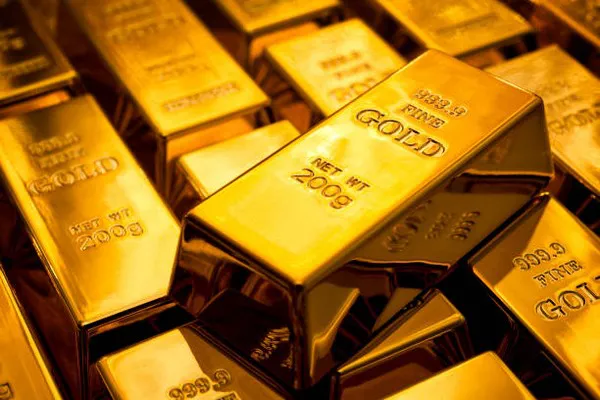Gold, often referred to as the “king of metals,” has been a symbol of wealth and security for centuries. Investors and individuals alike have historically turned to gold as a safe haven during times of economic uncertainty. However, in recent years, observers have noticed a perplexing trend: the price of gold has remained relatively stagnant, failing to exhibit the explosive growth that many had come to expect. This article delves into the various factors contributing to this phenomenon and seeks to shed light on why gold prices have not been experiencing their typical upward trajectory.
Strong US Dollar
One of the most significant factors influencing the price of gold is the strength of the US dollar. The relationship between gold and the dollar is inversely proportional: as the dollar strengthens, gold prices tend to decline, and vice versa. In recent years, the US dollar has generally been strong, fueled by factors such as robust economic growth, higher interest rates, and relative political stability. This has created headwinds for gold, as it becomes less attractive to investors seeking safe-haven assets when the US dollar is performing well.
Low Inflation
Gold is often seen as a hedge against inflation. When inflation rises, the purchasing power of fiat currencies erodes, making tangible assets like gold more appealing. Conversely, when inflation remains low, there is less urgency for investors to flock to gold as a store of value. In recent years, many developed economies have experienced subdued inflation, which has dampened the enthusiasm for gold as an inflation hedge.
Stock Market Performance
The stock market’s performance can also have a significant impact on gold prices. When equities are performing well and delivering strong returns, investors may allocate less of their portfolios to gold. Conversely, during periods of market turbulence or uncertainty, gold tends to shine as a safe-haven asset. Over the past decade, global stock markets, particularly in the United States, have experienced a prolonged bull run, which has diminished the appeal of gold to some extent.
Cryptocurrency Competition
The emergence of cryptocurrencies, led by Bitcoin, has introduced a new asset class that competes with gold for investor attention. Some investors view cryptocurrencies as a modern alternative to gold, providing a decentralized store of value and a hedge against inflation. As cryptocurrencies gained popularity and experienced significant price volatility, they diverted capital away from traditional safe-haven assets like gold.
Central Bank Policies
Central banks play a crucial role in influencing the demand for gold. When central banks purchase gold, it can provide strong support for its price. Conversely, if central banks reduce their gold holdings or refrain from buying, it can weigh on gold prices. In recent years, some central banks have been diversifying away from gold in favor of other assets, impacting the overall demand for the precious metal.
Economic Recovery
The global economic recovery following the 2020 pandemic-induced recession has also played a role in the stagnation of gold prices. As economies rebounded and investors regained confidence, risk-on sentiment prevailed in financial markets. In such an environment, safe-haven assets like gold were less appealing, leading to subdued demand.
Real Interest Rates
Real interest rates, which account for inflation, are a critical determinant of gold prices. When real interest rates are low or negative, gold becomes more attractive because the opportunity cost of holding the metal is reduced. Conversely, when real interest rates are high, the yield on alternative investments like bonds becomes more appealing, potentially reducing the demand for gold. In recent years, real interest rates have been relatively low in many developed economies, providing some support for gold prices. However, as central banks consider raising interest rates to combat inflation, this factor may weigh on gold in the future.
Geopolitical Stability
Geopolitical tensions and instability can often drive investors to seek refuge in gold. However, the past few years have seen a relative decrease in major geopolitical crises compared to previous decades. This has diminished the urgency for investors to allocate significant portions of their portfolios to gold as a hedge against global turmoil.
Supply and Demand Dynamics
Supply and demand dynamics also play a role in gold price movements. While gold production has remained relatively steady, demand for the metal has been affected by changing consumer preferences, especially in jewelry, and by shifts in industrial use. Additionally, recycling and secondary supply sources impact the overall availability of gold in the market.
Conclusion
The stagnant gold prices witnessed in recent years can be attributed to a confluence of factors. These include the strength of the US dollar, low inflation, the robust performance of the stock market, competition from cryptocurrencies, central bank policies, the global economic recovery, real interest rates, geopolitical stability, and supply and demand dynamics. It is important to note that these factors are interrelated and can influence each other, creating a complex web of influences on the price of gold.
While gold may have experienced a period of relative stagnation, it is important to remember that the factors influencing its price are subject to change. Economic conditions, geopolitical events, and investor sentiment can shift rapidly, potentially causing gold prices to react accordingly. Investors and analysts should continue to monitor these factors closely and adapt their strategies accordingly, recognizing that the precious metal still holds a valuable place in a diversified portfolio, even during periods of relative price stability.


